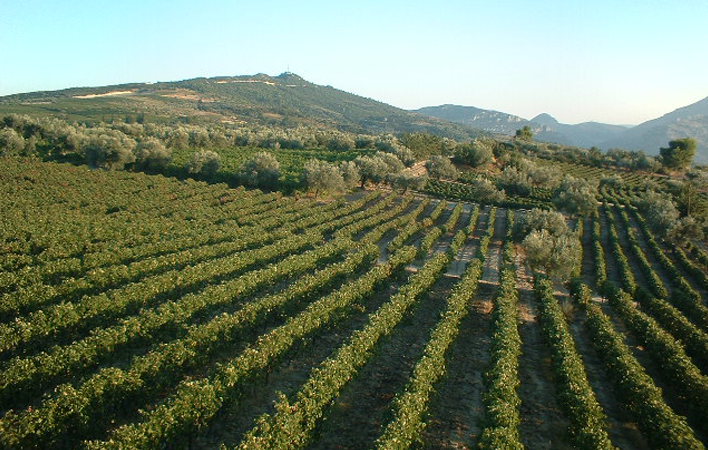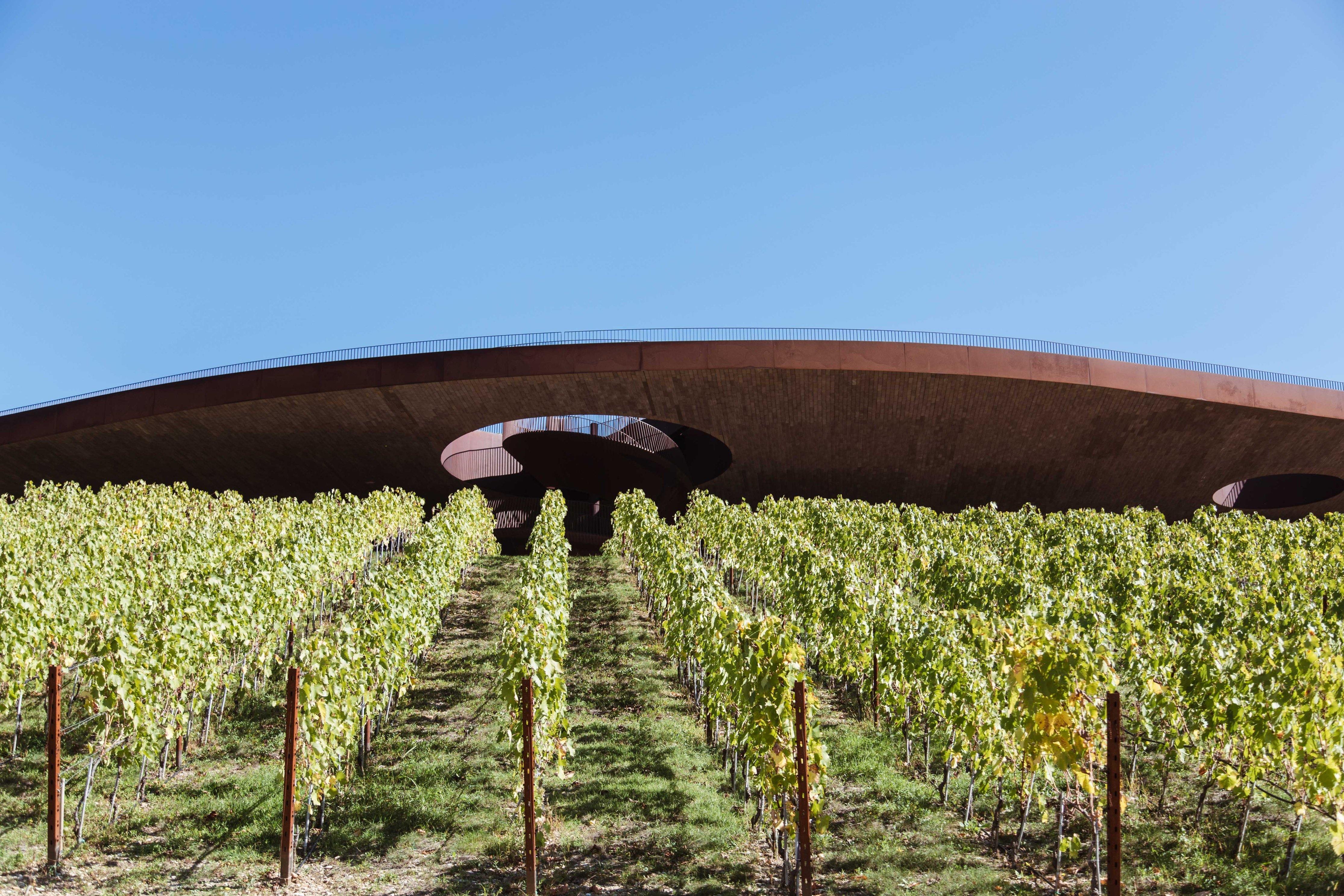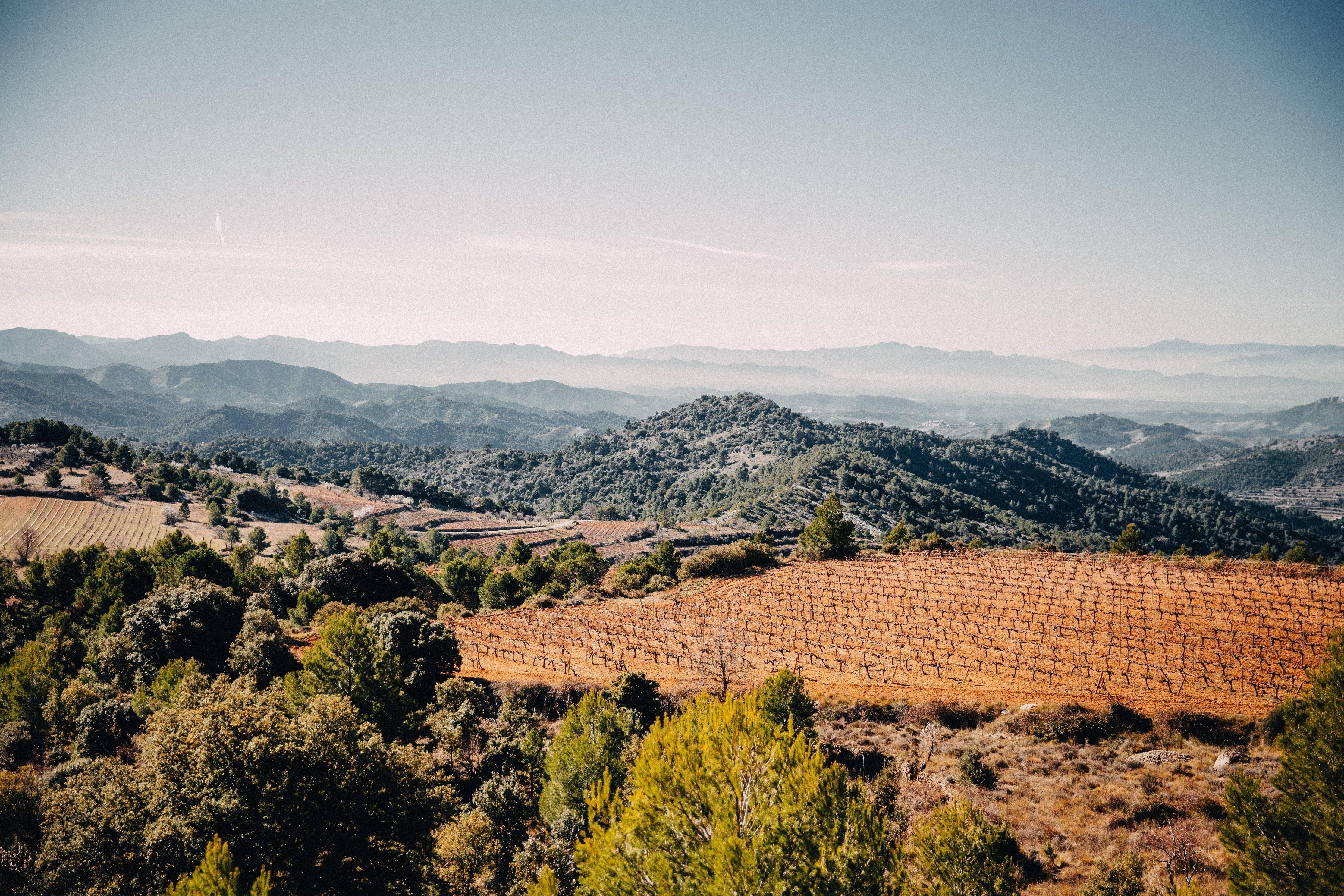Chardonnay has an amazing ability to multi-task and can adapt to almost any growing condition to produce consistently high quality wines. It is the grape behind all the great white Burgundies and one of the most important components in Champagne – in some cases a star solo artist in the Blanc de Blancs style.

Chardonnay Vine
Whether you are the most avid fan of White Burgundy, or the most cynical “ABC” (anything but Chardonnay) drinker, there is no escaping the fact that, commercially, Chardonnay remains the most important white variety in the world. And it is probably the most important white grape in the New World where increasingly finer “Burgundy” styles are being produced, in many cases challenging the best of France.
It is the second most widely planted white variety in the world and one the most adaptable vines for wherever it is grown. From the coolest, marginal to the warmest (micro)climate Chardonnay can produce wines of good to world class quality and in dramatic range of styles.
The variety itself is quite hardy and buds and ripens relatively early. This aspect is very important in cooler sites and regions. Though a very vigorous plant is not naturally a heavy cropper (say in relation to Sauvignon Blanc) which assists in providing the levels of concentration and power for which it is rightly renowned. Not the most naturally aromatic of varieties what are the flavour profiles of this grape?

The range of smells and flavours associated with Chardonnay, courtesy of WakawakaWineReviews.com.
Cool climate Chardonnay has aroma and flavour notes of apple, mildly citrus and white stone fruits. The most famous cool climate wine region for Chardonnay is Chablis. As the climate becomes more moderate the intensity of the stone fruit character becomes much more intense – almost “peachy” in certain areas. In warm growing areas tropical notes emerge of melon, pineapple, even mango alongside the stone fruits. This is especially true of many New World Chardonnays.
One of the major differences for Chardonnay (v most other white wines) is that its production process is often the most manipulated. Whereas most fruity and aromatic whites are cool fermented, unoaked, and bottled early, many Chardonnays go in a diametrically opposite way. The norm for most of the quality and artisan Chardonnay wines is to make and model on the traditional heartland methods devised and fine-tuned over generations in Burgundy.

The “lees” having been stirred in a barrel of Chardonnay!
These include barrel fermenting the wine at a higher temperature than in inert stainless steel. This not only imparts oaky, toasty, or vanilla notes but builds on Chardonnay’s already inherent richness and body to make a much more textural wine. In addition, the wine is then aged for an extended period on the dead yeast cells, called the lees – often with stirring of the wine in barrel – to add subtle bready notes. This process can take as long at 12 months in some lees aged examples.
Finally, the vast majority also go through a secondary fermentation process called the malolactic. Here bacteria feed on part of the malic acid in the wine (one of the main acids in wine) and convert this into a much softer acid – lactic. This is also the acid found in many dairy products. In addition, biproducts such as diacetyl are produced. This component has an intense buttery flavour, so along with lactic an overall “buttery” character is created. This process can also create some attractive nutty notes. Add this to the oak and yeast elements and the wine becomes even more complex and textural.

This whole process was pioneered and perfected in Burgundy and especially the top Villages of the Côte de Beaune (including Meursault, Puligny and Chassagne Montrachet) which today remain the standard bearers for all quality focused Chardonnay winemakers the world over. And both Puligny and Chassagne share the same Grand Cru – Montrachet – which is the finest single Chardonnay vineyard in the world, so much so they proudly adjoin it to their Village’s names.
Vino Gusto carry a very classic example of white Burgundy – from the prestigious estate of Domaine de Montille and the Village of Chassagne-Montrachet. A special occasion bottle, certainly, but one worth giving a go at Christmas time perhaps? And from the same cellars but with negotiant grapes from the village of Rully a little further south in the Côte Chalonnaise, is an example of outstanding winemaking at a better price point - relatively speaking, of course.

The best addresses in Burgundy for Chardonnay?
Of course, you can still find unoaked Chardonnay – most famously in Village level Chablis, also in Burgundy – but here again lees aging and malolactic will still occur. Vino Gusto has an outstanding example of a Village Chablis from the excellent Domaine Laroche, which epitomises the racy, elegant, cool climate, and mineral style.
So, outside of Burgundy, let us look at some representative and top examples of this grape from around the New World and how their styles may be changing.
One of the best aspects about so many of today’s “new wave”, New World wines is how much more “cool climate” and balanced they have become in recent times – with less emphasis on fatness in the wine and heavily toasted oak styles – and with more pristine fruit qualities. Twenty odd years ago my heart would sink at the prospect of an Australian Chardonnay with their (too often) booming alcohol, confected pineapple chunks flavours and “clunky” oak character – but not anymore! It really does seem that the heavy, alcoholic and over the top oaky styles of Chardonnay have gone.
This is because good producers in these countries have planted more Chardonnay in selected cooler sites – using aspects such as altitude and cooling (sea) breezes. They have also looked to pick earlier when sugar levels are relatively lower (and therefore potential alcohol) and acidity remains higher. Then the use of oak has become much more subtle with less time spent in wood and casks which are more lightly toasted. Then working assiduously to the Burgundy production model, they are creating wines of which many have a genuinely “classical” feel to them.
Some top regions in the New World include Carneros and Sonoma in California, Hemel-en-Aarde and Elgin (Walker Bay) in South Africa, Adelaide Hills, Margaret River (Western Australia) and Yarra Valley in Australia, Central Otago and Marlborough in New Zealand, and Casablanca and Leyda Valleys in Chile.
 Hemel-en-Aarde, South Africa (L) & Adelaide Hills, South Australia (R)
Hemel-en-Aarde, South Africa (L) & Adelaide Hills, South Australia (R)
Two excellent examples of the modern face of Chardonnay in the New World (made in the Burgundian style) - from the Vino Gusto portfolio – Crystallum 'The Agnes' from South Africa and superb value for money Plantagenet Three Lions from Western Australia.
Maybe the slight surprise is that very little Chardonnay is found in the rest of Europe outside of France. Pockets exist in Italy and Spain, but these are relatively limited, or local, or the passion of a few individuals in the mix of their portfolio.
A top example of this is the very top Tuscan take from Isole e Olena “Collezione Privata 2019” (2020 also available).
A Twist in the Tale

One final aspect of Chardonnay though worth highlighting is its part in producing some of the world’s finest sparkling wines. It is a key component in many of the highest quality Champagnes – often blended with Pinot Noir and (Pinot) Meunier. It can also be the lead, star role, in the Champagne style called Blanc de Blancs, which are required to be made from 100% Chardonnay. These Champagnes are the epitome of delicacy, finesse and elegance and showcase as well as any wine in the world just how refined a grape variety Chardonnay is. The finest of all these Champagnes are found in the region called the Côte des Blancs to the south of Epérnay. Here deep, chalky soils provide the ideal environment for the grape to produce wines which are simply mesmerising – so much so that top Villages in this area – such as Cramant, Avize, Mesnil and Oger are accorded Grand Cru status.
This vintage single vineyard Mesnil sur Oger Grand Cru example – from artisan specialist Côte des Blancs Domaine Michel Gonet (pictured) - epitomises the refined and delicate style of Chardonnay as a single signature in a Blanc des Blancs Champagne.
Overall, I feel most Chardonnays made today – and at all levels - are as good as they have ever been. As importantly, I think they are made in a better balanced and more refined way. It may be time – if you fell out of love with this grape – to relook at this variety.
Chardonnay and Food
Chardonnays which have been barrel fermented and aged are predominantly designed to go with food. They are natural partners with most fish dishes – especially if served with a butter-based sauce. Any rich, or roasted vegetable dishes, including risotto for example, also partner well with this style of Chardonnay. And of course, any general white(r) meats – such as chicken or pork will work comfortably too.
Crisp, dry unoaked Chardonnays, especially Chablis - and Blanc des Blancs Champagne and can be enjoyed as an aperitif, but make excellent partners with canapés, shellfish, and sushi.
__
Nick Adams MW
 We are delighted that great friend of the business, Nick Adams MW, has joined our team to write a monthly wine blog. If you're a regular at casa VG, you may have bumped into Nick at one of our collaborative tastings. If you're not instantly familiar with Nick's post-nominals, Nick is one of only 415 Masters of Wine in the world.
We are delighted that great friend of the business, Nick Adams MW, has joined our team to write a monthly wine blog. If you're a regular at casa VG, you may have bumped into Nick at one of our collaborative tastings. If you're not instantly familiar with Nick's post-nominals, Nick is one of only 415 Masters of Wine in the world. Nick says, “I am looking forward to working even more closely with Jake and the team at Vino Gusto. I hope to bring my broad trade experience into play to keep you informed and entertained via these monthly blog releases. Please do though let us know of any subject matters which might be of special interest to you, and we will see if can get these included over the coming months”.


















Great article, thank you Nick and VG. I am constantly searching for the ‘smack you in the face’ kind of Oaked Chardonnay very much in a retro style and am often disappointed with a hint here or there, any suggestions? KR, Stuart
Leave a comment